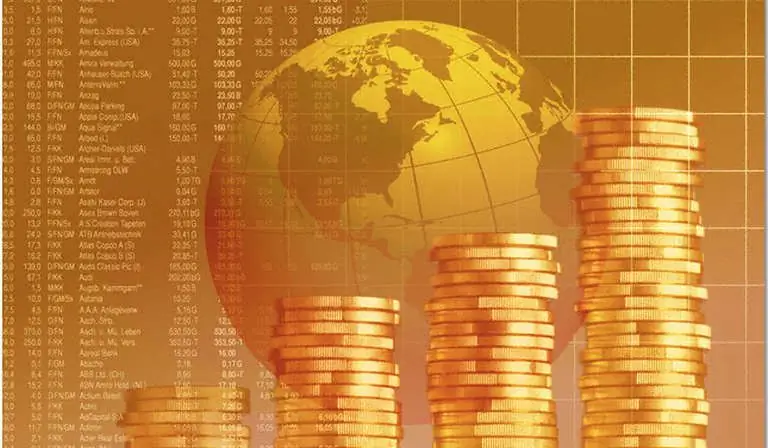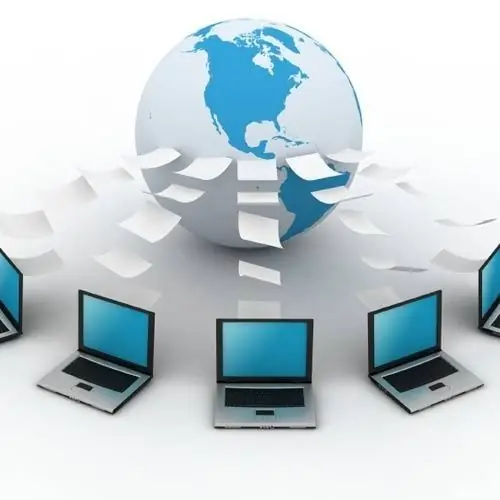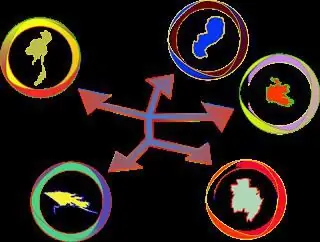2026 Author: Howard Calhoun | [email protected]. Last modified: 2025-01-24 13:10:34
Consideration of some theories in the field of international trade made it possible to determine the reasons for countries' trade with each other. However, an equally important issue is the choice by states of a certain type of international trade policy.
Based on theoretical aspects, one can single out the policy of protectionism and free trade. These are the two main types of international trade that contribute to obtaining positive results for the state's economy. Let's take a closer look at each of them.
Definition of free trade

Free trade is a policy in which the state must refrain from interfering in foreign trade. Due to this behavior, the country develops international trade under the influence of supply and demand. There is another name for free trading. This is a free trade policy, which should meet the interests of any state to the greatest extent, which leads to the achievement of maximum production volumes for each of the trading parties.
Definitionprotectionism
However, another type of international trade policy is known - protectionism. In this case, the national market is protected from foreign competition using customs tariffs, as well as non-tariff regulatory mechanisms.
There is a constant debate among supporters of both free trade and protectionism about the appropriateness of implementing one or another of these policies. Each of the parties to the dispute puts forward certain arguments in support of their positions.
Free trading: pros and cons

This type of policy proves that any interference by the state in the formed interstate trade is economically harmful.
The free trade argument is the use of a general theoretical thesis based on the comparison of production costs, thanks to which the world economy achieves a rational allocation of resources and a high standard of living. The technology of production and the structure of resources in each individual country have their own characteristics, which determine the differences in national production costs of various products and resources, which causes specialization in the field of division of labor in the international arena. Less expensive and better quality resources and products are also allocated there.
With all these positive aspects of free trade, the following features do not belong to the advantages of free trade. Since the population may prefer imported analogues to domestic goods morehigh quality, then Russian manufacturers will reduce their production with the subsequent dismissal of workers. This fact will lead to a decrease in tax revenues to the state budget. There is also a possibility that the state will become more dependent on foreign-made goods, the prices of which will rise and most of the population will no longer be able to buy them. The best result of free trading is to encourage manufacturers to improve their products while reducing costs. This fact will lead to lower prices for finished products.
Other arguments for free trade
There are other facts that testify to the benefits of using free trade. These are the arguments:

- increased competition in the domestic market of states by attracting external suppliers, which significantly limits the monopoly of local producers;
- stimulating the economic activity of national producers who are forced to fight with foreign competitors for buyers;
- expansion of choice for buyers, who have the opportunity to compare the price and quality of foreign and domestic products.
Arguments for protectionism
It is necessary to highlight the following main points:

- in the interests of national security, there is a need for self-sufficiency of the economy in the main strategic sectors, due to which it is not allowedfood and resource dependence on other states by ensuring the protection of domestic production from foreign suppliers;
- the need to preserve jobs with their subsequent increase;
- the need to support domestic demand for the products of national producers, and not their foreign counterparts;
- ensuring economic stability through diversification due to the high risk of various economic fluctuations in the world economy with a narrow specialization of the domestic economy;
- the need to protect new sectors of the Russian economy, unable to compete with similar foreign manufacturers without state support;
- creating favorable conditions for the improvement of some industries at the expense of profits that can be obtained through price increases when customs duties are introduced.
The history of free trading in foreign countries

What is free trading can be seen on the example of managing in the 19th century in England. At that time, freedom of trade was manifested in the total exemption from various customs duties on goods imported into and exported from England. At the same time, thanks to the duty-free sale of its products, as well as the importation of cheap imported raw materials and food, England was able to quite successfully achieve high results in its domestic market during this period.
England in the 60s. 19th century on the principle of mutual favor werebilateral agreements have been concluded with Belgium, France, Italy, Sweden and Austria. Particular attention should be paid to the Anglo-French treaty (1860). At first glance, this agreement would be more beneficial for France, since it is England that cancels all duties on silks and allowances of French production, and France only reduces the tariff on English coal, machinery and wool. However, British goods, despite the partial imposition of duties, cost an order of magnitude cheaper and therefore flooded the French market. Thus, the policy of free trading helped to maintain England's dominant position in the world market.
Examples of using free trade policy in Russia

The policy of free trading has been used in various periods of Russia's economic development. Without going deep enough, let's turn to 20th-century economics. Thus, in the 1980s, the Russian market was characterized by a shortage of absolutely all consumer goods. At the same time, the prices were quite low, and the queues were significant. The year 1992 was marked by the abolition of the state monopoly on the sphere of foreign trade, which was a prerequisite for a rapid flow of foreign goods to the domestic market. Trade began to develop actively, a layer of entrepreneurs, known as "shuttle traders", arose. They mainly imported cheap goods from China and Turkey, which were sold immediately on the streets near markets and shops.
The current state of the Russian economy
Today this stagepassed, and the buyer had a choice - to purchase goods of domestic or imported production. A prime example of this is the food market. For example, Russian products have a number of advantages such as naturalness, freshness and the absence of various harmful additives. However, it has a price slightly higher than its foreign counterpart. Yes, and it looks a little worse than overseas products.
Recommended:
Indicators without delay and redrawing: types, principle of operation, pros and cons of application, expert advice

There is a wide variety of different tools in trading: graphical constructions, technical indicators, automated programs, trading signals and much more. To successfully apply them in trading, you need to understand how they work. Indicators without delay and redrawing are especially popular with traders
Centralized management: system, structure and functions. Principles of the management model, pros and cons of the system

Which management model is better - centralized or decentralized? If someone in response points to one of them, he is poorly versed in management. Because there are no bad and good models in management. It all depends on the context and its competent analysis, which allows you to choose the best way to manage the company here and now. Centralized management is a great example of this
Pros and cons of LLC and IP

The pros and cons of LLC and IP can be listed for a long time, but only a true entrepreneur will not be stopped by such trifles
Pros and cons of a car loan: programs, their features and conditions

Purchasing a car with your own savings is not available to every citizen. A car loan will help solve the problem, the registration of which is not particularly difficult. To apply for a car loan, you need to choose the optimal program, collect a package of documents and take into account all the pros and cons
What is better to open: LLC or IP? Pros and cons of sole proprietorship and LLC. The difference between sole proprietorship and LLC

What is better to open: LLC or IP? Having decided to throw off the shackles of office slavery and no longer work "for your uncle", developing your own business, you should know that it must be legal from a legal point of view

